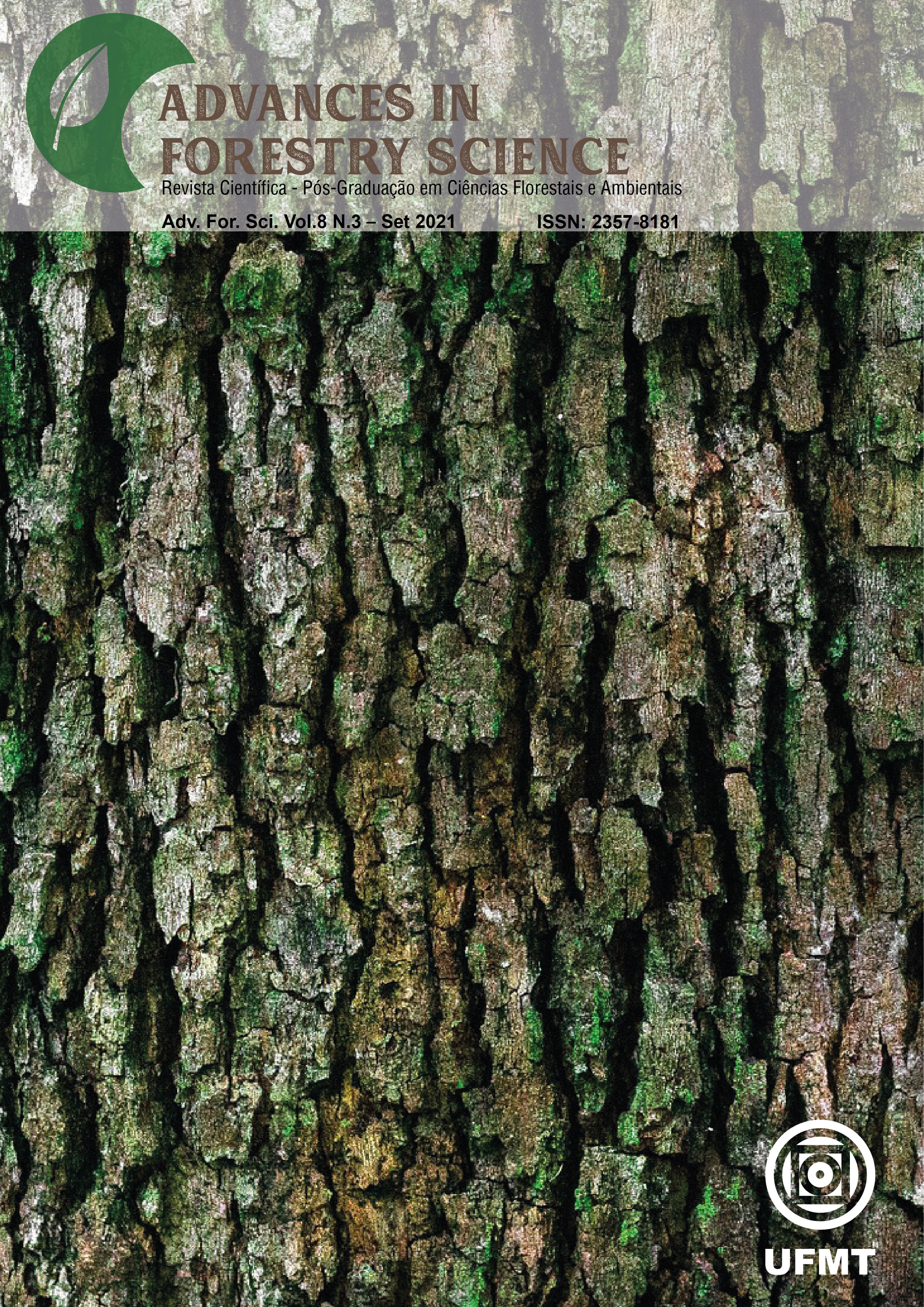Effect of spacing on volume, form factor and taper for Pinus taeda trees in Paraná, Brazil
DOI:
https://doi.org/10.34062/afs.v8i3.12361Resumo
Several forestry procedures affect tree volume and shape, such as spacing, pruning, and thinning. Studying and understanding the effect of these operations on stand attributes are very important for forest management. This study aimed to evaluate volume, form factor, and taper for Pinus taeda trees stratified into diameter classes within two planting spacings. In addition, we aimed to evaluate the time spent to scale each tree, measured with a chronometer. Indirect scaling was performed using a Criterion RD 1000. Thirty trees were scaled on each planting spacing (3 m x 2 m and 4 m x 2 m), totaling 60 trees encompassing all diameter classes. Tree volume was calculated using the Smalian equation. Tree volume, form factor, and taper were calculated to each tree and evaluated by stand (independent t-test) and diameter class (variance analysis and Tukey test). The average scaling time was 4 minutes and 35 seconds, which decreased with practice (-24%). Form factor and taper differed with spacing and diameter class. Volume did not differ with spacing, but it did in the diameter classes. We concluded that indirect scaling is a practical method for tree volume assessment; higher planting density leads to more cylindrical stems with lower taper ratios in comparison with denser stands; and the fact that tree volume, form factor and taper differed among the diameter classes should be incorporated into studies of taper modeling.

